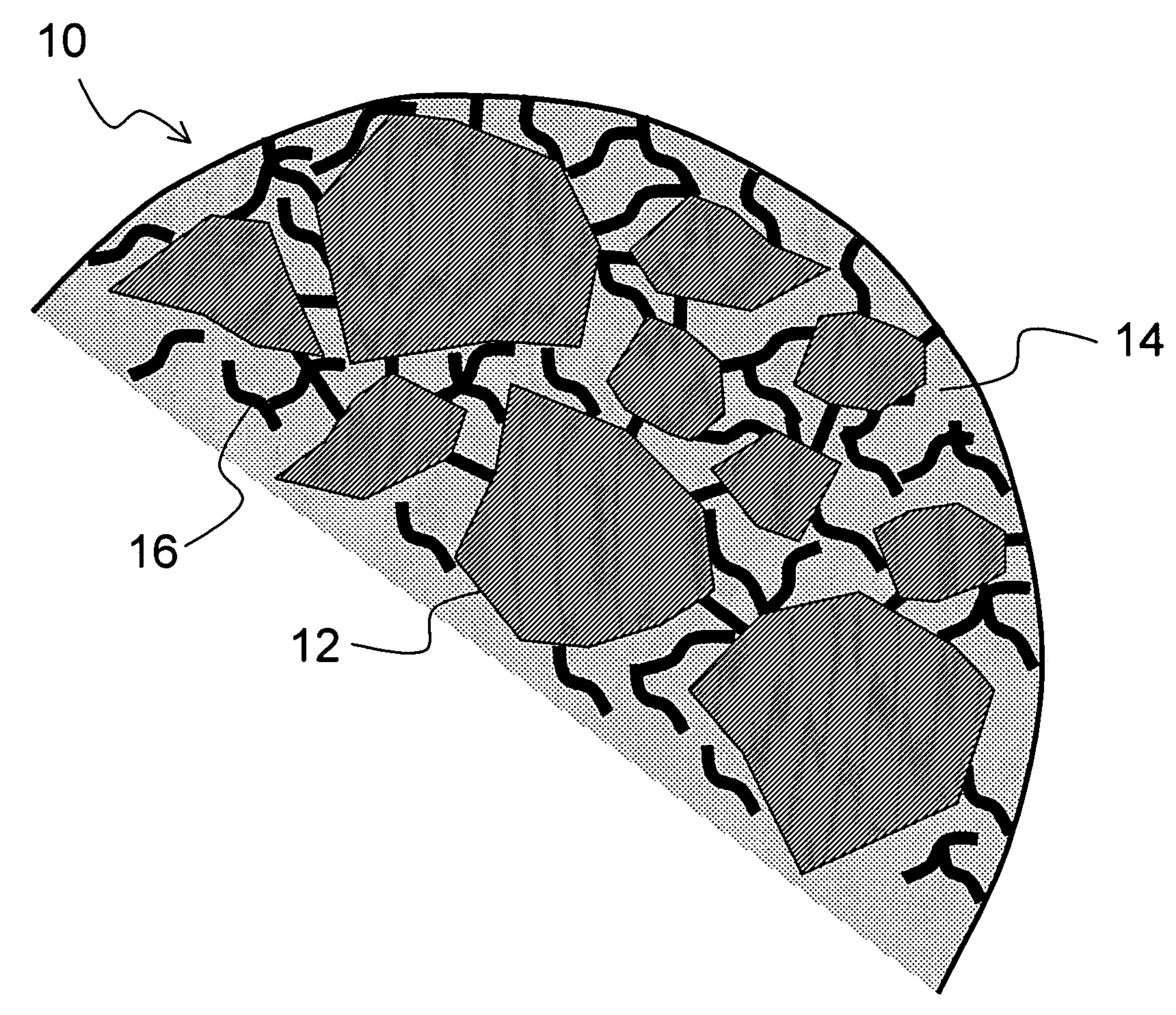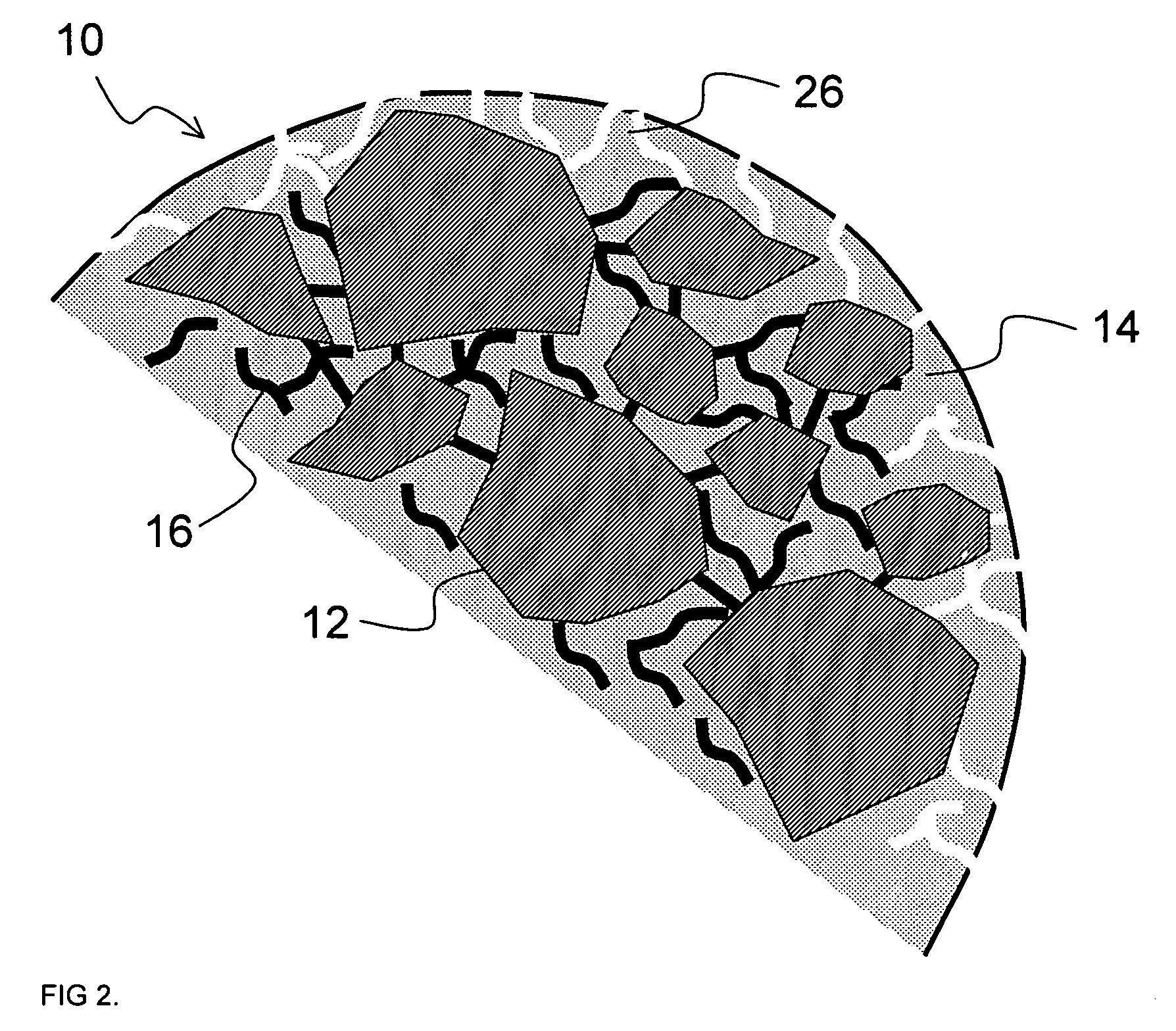Multiparticulate crystalline drug compositions having controlled release profiles
a technology of drug compositions and crystalline particles, which is applied in the direction of biocide, heterocyclic compound active ingredients, microcapsules, etc., can solve the problems of large changes in the release rate of drugs, and achieve the effect of low viscosity and high drug loading
- Summary
- Abstract
- Description
- Claims
- Application Information
AI Technical Summary
Benefits of technology
Problems solved by technology
Method used
Image
Examples
example 1
[0078] Multiparticulates were made comprising 50 wt % azithromycin dihydrate, 40 wt % of the glyceride COMPRITOL 888 ATO and 10 wt % poloxamer 407 (of a block copolymer of ethylene and propylene oxides commercially available as PLURONIC F127 or LUTROL F127 from BASF, Mt. Olive, N.J.). First, 250 g crystalline azithromycin dihydrate, 200 g of the COMPRITOL 888 ATO and 50 g of the PLURONIC F127 were blended in a twinshell blender for 20 minutes. This blend was then de-lumped using a Fitzpatrick L1A mill at 3000 rpm, knives forward using a 0.0065-inch screen. The mixture was blended again in a twinshell blender for 20 minutes, forming a preblend feed.
[0079] The preblend feed was delivered to a B&P 19-mm twin-screw extruder (MP19-TC with a 25 L / D ratio purchased from B & P Process Equipment and Systems, LLC, Saginaw, Mich.) at a rate of 130 g / min, producing a molten feed suspension of the azithromycin dihydrate in the glyceride / poloxamer carrier at a temperature of about 90° C. The fee...
examples 2-6
[0085] Azithromycin-containing multiparticulates were made as in Example 1, with the processing variables noted in Table 1. The ratio of ingredients was varied to determine the effect on azithromycin release. PXRD analysis confirmed that >90 wt % of the azithromycin in the multiparticulates was crystalline dihydrate.
TABLE 1Formulation(Azithromycin / COMPRITOL 888FeedDiskDiskBatchAnnealingEx.ATO / PLURONICRatespeedTempsize(° C. / % RH;No.F127, wt %)(g / min)(rpm)(° C.)(g)days)150 / 40 / 1013055009050047 / 70; 1250 / 45 / 414055009049147 / 70; 1350 / 46 / 4140550090496840 / 75; 5450 / 47 / 3180550086101540 / 75; 53.45 wt % H2Oadded to preblendfeed550 / 48 / 213055009050047 / 70; 1650 / 50 / 013055009050047 / 70; 1
[0086] The rate of release of azithromycin from the multiparticulates of Examples 1-6 was determined using the following procedure. A sample of the multiparticulates was placed into a USP Type 2 dissoette flask equipped with TEFLON®-coated paddles rotating at 50 rpm. For Examples 1-3 and 6 ,1060 mg of multiparticulat...
example 7
[0090] Multiparticulates were made as in Example 1 comprising azithromycin dihydrate, the glyceride STEROTEX NF and the poloxamer PLURONIC F127 with the processing variables noted in Table 4. PXRD analysis of the multiparticulates confirmed that >90 wt % of the drug present was crystalline.
TABLE 4Formulation(Azithromycin / STEROTEX / FeedDiskDiskAnnealingPLURONIC F127,RatespeedTempBatch(° C. / % RH;wt %)(g / min)(rpm)(° C.)size (g)days)50 / 46 / 414055008571940 / 75; 5
[0091] The so-made multiparticulates were evaluated in the same manner as those of Examples 1-6, with a sample size of 1060 mg. The results of this dissolution test are given in Table 5.
TABLE 5AzithromycinTimeReleased(min)(%)001522303660521206818074
[0092] From the data in Table 5, the dissolution rate constant k was calculated as noted above and is given in Table 6. The dissolution rate constant for Example 3 is shown again for comparison.
TABLE 6Formulation(Azithromycin / Glyceride / % Drug% DrugExamplePLURONICReleasedReleasedkt1 / ...
PUM
| Property | Measurement | Unit |
|---|---|---|
| wt % | aaaaa | aaaaa |
| molecular weight | aaaaa | aaaaa |
| wt % | aaaaa | aaaaa |
Abstract
Description
Claims
Application Information
 Login to View More
Login to View More - R&D
- Intellectual Property
- Life Sciences
- Materials
- Tech Scout
- Unparalleled Data Quality
- Higher Quality Content
- 60% Fewer Hallucinations
Browse by: Latest US Patents, China's latest patents, Technical Efficacy Thesaurus, Application Domain, Technology Topic, Popular Technical Reports.
© 2025 PatSnap. All rights reserved.Legal|Privacy policy|Modern Slavery Act Transparency Statement|Sitemap|About US| Contact US: help@patsnap.com



